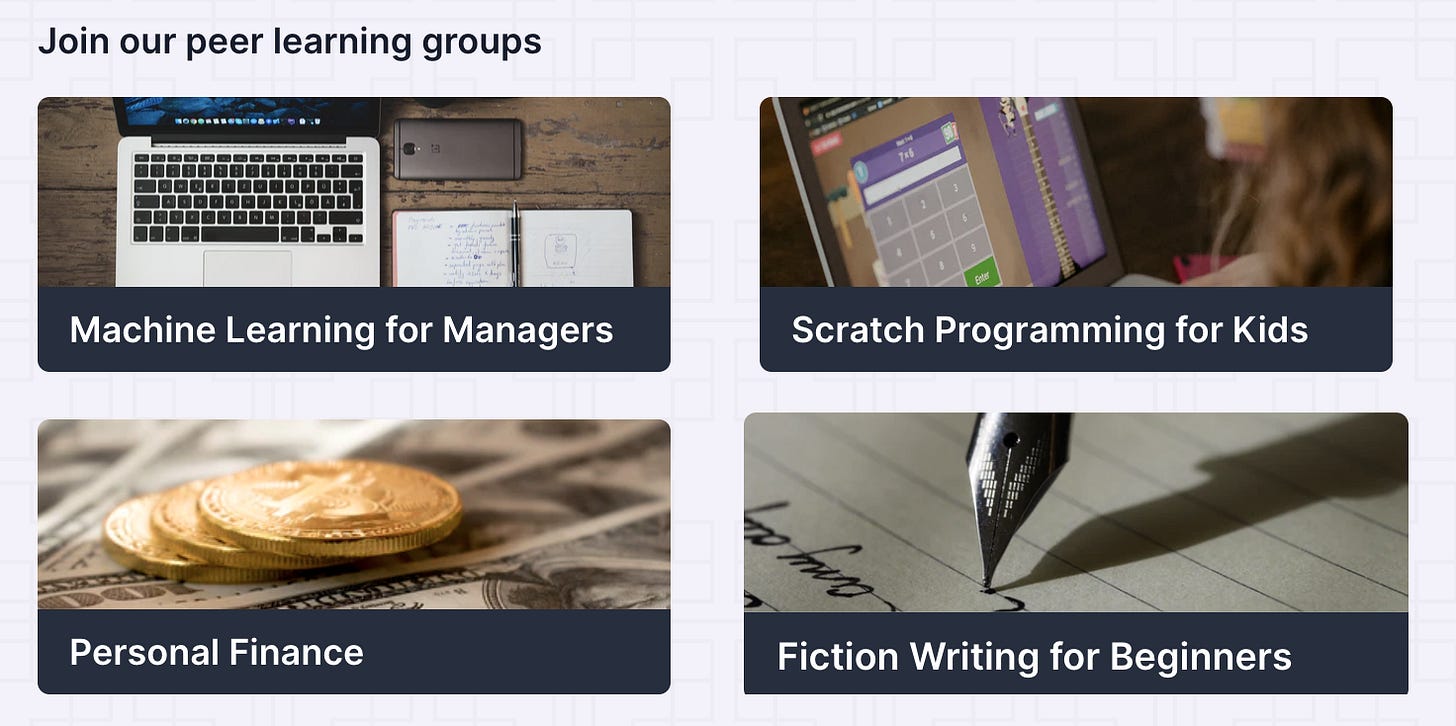People-centered learning platforms
What does engaging, internet-native learning look like?

We’ve seen an explosion in online educational platforms in the last few decades — Coursera, Udemy, Khan Academy, and many more. For the first time, knowledge was democratized and accessible to just about anyone with an internet connection.
In 2020, this market is now saturated and we’re finding that the drop-off rate for these massive online open courses (MOOCs) is extremely high. This isn’t all the surprising, as online courses are usually not much more than a playlist of videos with intermittent quizzes and additional reading. If there’s any community aspect, it’s often a forum.
This begs the question - what does engaging, internet-native learning look like?
Hyperlink Academy
Hyperlink is a platform for creating and participating in community-driven online courses. The founders noticed that despite the saturated market, there aren’t many options for people who prioritize teaching and learning together with others.
At universities, learning is often a social endeavor. Many of my classes emphasized precepts, or small discussion groups, as a core part of the learning experience. This aspect hasn’t translated very well to modern learning platforms.
Hyperlink has a strong focus on enabling active, participatory learning experiences. Here are a few of the guiding principles behind the platform:
- Community-driven: building space for small, focused groups, learning together
- Ambitious learning: going way beyond reading lists and video lectures to learn challenging ideas
- Experimentation: courses with innovative structures, that adapt and improve over time
- Peer to peer: instead of "teachers" and "students", facilitators and learners co-create the learning experience
This makes for much different learning experience than the competition. The courses themselves are also much more niche than those you can find on other platforms, from web typography to language construction. Check out two more examples below:

Probably the most underrated aspect of these courses though, are the people you’ll meet — who are drawn to the same niche topics and fields that you are.
But there’s more! In addition to the traditional course, Hyperlink is experimenting with the idea of clubs — “a lightweight way to convene people with shared interests to explore new things together”.
The first batch of learning clubs are kicking off now, including a reading group, an artist circle, a club on the future of media, and even a virtual museum explorer club.

Be sure to take a look at Hyperlink’s library of courses and clubs!
Learn Awesome
Another problem with online learning is that despite the plethora of information, it’s still a big challenge to discover the right learning material.
There are a lot of open resources available on the web, but finding, qualifying, and navigating them–let alone combining them into a self directed system–is a challenge. That’s because the tools we use today to search the web are designed for quickly finding facts, not for guiding you on a learning journey. — Dani Grant
If we want to teach ourselves a new topic efficiently, we need the real-world analog of a course syllabus. A syllabus is essentially a learning map; it defines a thematic structure, tells you what to read, and also it what order to read it.
The founder of Learn Awesome is trying to build humanity’s learning map, a crowdsourced syllabus for any topic you can think of. Unlike a syllabus, this platform draws on all the ways we learn today — blogs, podcasts, videos, graphics, forums, etc.
Not only that, but the community seems to also be experimenting with peer learning groups. I’ve been interested in fiction writing for a while, and the crowdsourced syllabus is probably one of the best collection of resources I’ve found on the subject.

With any luck, this platform could become the Wikipedia for learning. Check it out!
Friday Brainstorm Newsletter
For more, join 300+ curious people subscribed to the Friday Brainstorm newsletter. It’s one email a month with the most interesting ideas I've found related to science and health.